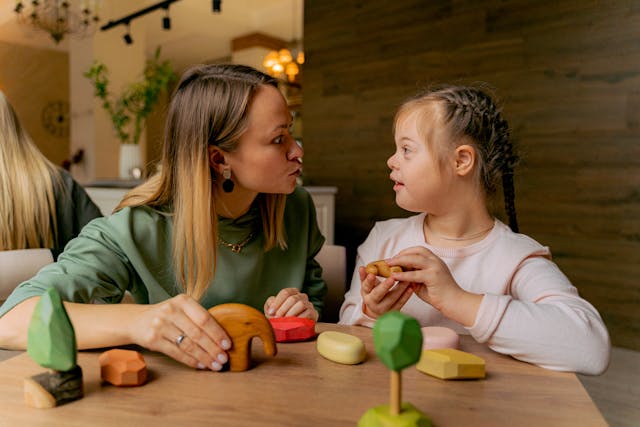The mention of child developmental delay (or commonly known as “เด็กที่พัฒนาการช้า” in Thai) often raises concerns and creates uncertainty among parents. Some immediate questions come to mind: Is this a normal state? Will the child be able to rebalance? Understanding the concept of developmental delay and how to help such children is the first step in setting on the pathway to growth.
Understanding Developmental Delay
Developmental delay refers to the child not acquiring certain milestones in motor, communication, learning, or social dimensions within the accepted timeframe. Since every child develops at a unique pace, if those milestones are significantly behind, then the child may need to be considered for professional evaluation.
There could be many causes, from genetic abnormalities to premature births on one hand and environmental factors like nutrition and stimulation on the other. Recognising this variance helps parents sidestep fault-picking and focus instead on solutions.
Common Areas of Delay
There can be signs that your child is experiencing delayed development:
- Speech and Language – delayed in talking, limited vocabulary, or difficulty following directions.
- Motor Skills – delayed in crawling, walking, or coordination of movements.
- Cognitive Development – Problem-solving is slowed down, and learning a task is difficult.
- Social and Emotional Growth – Trouble interacting with peers, making eye contact, or regulating emotions.
Early recognition greatly improves intervention and mitigates the overwhelming feelings experienced by the child and parent.
The Role of Early Intervention
In addressing developmental delay, early intervention stands out as one of the most potent measures. The targeted therapeutic support will give a child the skills he or she needs to thrive in speech therapy, occupational therapy, or physical therapy.
In Thailand and across the world, paediatricians and child development centres encourage parents to seek advice and intervention whenever their concerns arise. The earlier support is provided to a child, the more possibilities there are to fill gaps and build self-confidence.
Supporting Children at Home
Parents and carers equally play a crucial role along with the therapy, as working from home can really push progress. A stimulating and loving environment must be provided; for example, read with the child every day, encourage play for motor skill development, or do simple social activities such as sharing toys.
Patience and positivity will go a long way. Children with slow development grow best in environments that support rather than pressure them, where achievements, big or small, are acknowledged and rewarded.
Health, Nutrition, and Lifestyle
Health and lifestyle choices are all the marks and closely linked to development. Adequate sleep, properly balanced nutrition, and exercise all promote a child’s capacity to learn and grow. So, for instance, adequate dietary intake of omega-3 fatty acids, proteins, and fresh fruits and vegetables helps develop the brain and body.
Laughter, Play, and Progress
It is very easy for parents to be consumed by worry during developmental delays, and yet joy and play are important. Laughter creates brain connections and reduces stress; it deepens the bond between parent and child.
If the growth of the child is concerning you, waste no time in contacting the doctor you trust or a child development centre. Early intervention, coupled with love and patience, can really make a difference in the child’s future.




